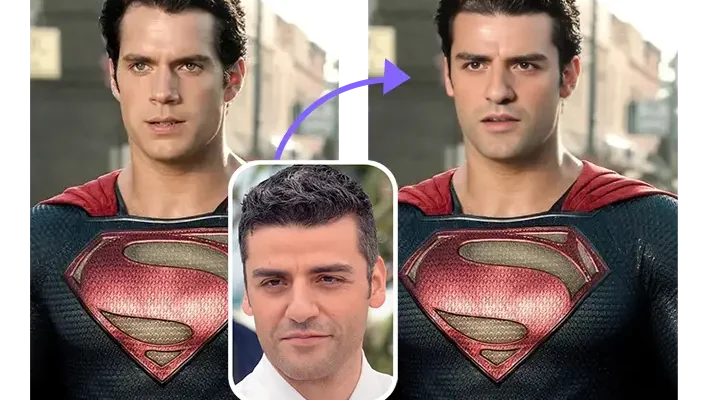Introduction
In the age of digital transformation, video editing has become more accessible and sophisticated than ever before. From simple cuts and transitions to complex special effects, the tools available today offer incredible flexibility to creators. Among these tools, Vadeo Remaker.ai stands out as a powerful AI-driven platform designed to make video editing more intuitive and efficient. One of its most intriguing features is the ability to change faces within videos—a capability that has sparked interest among both amateur and professional editors.
Face-swapping technology, once the domain of Hollywood studios, is now available to anyone with a computer and an internet connection. This guide will take you through the process of changing faces in videos using Vadeo Remaker.ai, exploring its features, applications, ethical considerations, and offering practical tips for getting the best results.
What is Vadeo Remaker.ai?
Vadeo Remaker.ai is an advanced video editing platform powered by artificial intelligence. It offers a range of features designed to simplify the video editing process, from automated color correction to smart trimming. However, its most revolutionary feature is the ability to manipulate faces within video content. This includes not only face-swapping but also facial expression editing, age manipulation, and even gender transformation.
The platform is designed for ease of use, with a user-friendly interface that allows even beginners to achieve professional-level results. Whether you’re looking to create deepfakes, enhance a cinematic project, or just have some fun with friends, Vadeo Remaker.ai provides the tools you need.
How Does Face-Swapping Work in Vadeo Remaker.ai?
Face-swapping technology relies on deep learning algorithms to map one person’s facial features onto another. Vadeo Remaker.ai uses a combination of facial recognition, image synthesis, and neural networks to achieve this effect. Here’s a step-by-step breakdown of how the process works:
- Facial Recognition: The AI scans the video to identify faces. This involves detecting facial landmarks such as the eyes, nose, mouth, and contours of the face.
- Feature Mapping: Once the faces are identified, the AI maps the features of the source face (the face to be replaced) and the target face (the new face) to ensure alignment. This step is crucial for maintaining natural expressions and movements.
- Image Synthesis: The AI then synthesizes the new face onto the target, adjusting for lighting, angle, and expression. This is where the magic happens, as the new face seamlessly blends into the original video.
- Refinement: Finally, the AI refines the swapped face, ensuring that it matches the original video’s color grading and resolution. The result is a seamless transition that looks as though the new face was always there.
Applications of Face-Swapping in Vadeo Remaker.ai
The ability to change faces in videos opens up a world of possibilities across various industries. Here are some of the most common applications:
- Film and Television: Face-swapping can be used to create stunt doubles, bring deceased actors back to life, or even de-age characters for flashback scenes. It’s a powerful tool for filmmakers looking to push the boundaries of storytelling.
- Advertising: Brands can use face-swapping to create personalized ads that feature the viewer’s face, increasing engagement and conversion rates. This level of personalization can make advertisements more relatable and effective.
- Social Media Content Creation: Influencers and content creators can use face-swapping to create viral content, parody celebrities, or collaborate in unique ways. The possibilities for creative expression are endless.
- Education and Training: Face-swapping can be used in educational videos to demonstrate scenarios with different characters, making lessons more engaging and relatable. For example, in medical training, it can simulate various patient interactions.
- Entertainment and Gaming: Video games and virtual reality experiences can use face-swapping to personalize avatars, allowing players to see themselves as the hero or villain in their favorite games.
Ethical Considerations
While the technology behind face-swapping is impressive, it also raises significant ethical questions. The ability to manipulate faces in videos can be used for both good and ill, and it’s important to consider the potential consequences.
- Consent: One of the primary ethical concerns is the use of someone’s face without their consent. This can lead to privacy violations and potential legal issues, especially if the content is distributed publicly.
- Deepfakes: The rise of deepfakes—videos that use AI to create hyper-realistic fake videos—has sparked concerns about misinformation and digital deception. While Vadeo Remaker.ai offers powerful tools, it’s crucial to use them responsibly.
- Cultural Sensitivity: Swapping faces across different ethnicities or genders can lead to unintended cultural insensitivity or misrepresentation. Creators should be mindful of the potential impact and avoid perpetuating stereotypes.
- Impact on Identity: The ability to change faces in videos could have psychological effects, particularly in reinforcing unrealistic beauty standards or altering perceptions of identity. It’s important to use this technology in ways that are positive and constructive.
Practical Tips for Changing Faces in Vadeo Remaker.ai
If you’re ready to start experimenting with face-swapping in Vadeo Remaker.ai, here are some tips to help you get the best results:
- Choose High-Quality Source Material: The quality of your source and target videos will significantly impact the final result. Ensure that both videos are well-lit, with clear and unobstructed views of the faces.
- Align Features Accurately: Pay close attention to the alignment of facial features. Even slight misalignments can result in unnatural-looking swaps. Vadeo Remaker.ai provides tools to manually adjust the mapping if necessary.
- Use Consistent Lighting: Lighting plays a crucial role in how realistic the face swap appears. Make sure that the lighting in both the source and target videos is consistent, or use the platform’s tools to adjust lighting post-swap.
- Experiment with Expressions: Vadeo Remaker.ai allows you to adjust facial expressions during the face-swapping process. Experiment with different expressions to see how they affect the final video.
- Leverage AI Refinement Tools: After the initial swap, use the platform’s refinement tools to enhance the final product. This includes adjusting color grading, sharpening details, and ensuring that the new face blends seamlessly with the background.
- Test Different Angles: The success of a face swap often depends on the angle of the face in the video. Experiment with different angles to see which ones produce the best results.
Case Studies: Successful Face-Swapping Projects
To illustrate the power of Vadeo Remaker.ai, let’s look at a few case studies where face-swapping was used effectively:
- Bringing Historical Figures to Life: A documentary filmmaker used Vadeo Remaker.ai to recreate scenes featuring historical figures. By swapping the faces of modern actors with those of historical figures, the filmmaker was able to create immersive reenactments that felt authentic and engaging.
- Celebrity Parody Videos: A popular YouTube creator used face-swapping to create hilarious parody videos featuring celebrity faces. By seamlessly integrating the faces of famous actors into funny scenarios, the creator gained millions of views and a significant following.
- Personalized Wedding Videos: A wedding videographer offered a unique service by swapping the faces of the bride and groom onto characters in famous movie scenes. This personalized touch added a layer of fun and creativity to the wedding video, making it a memorable keepsake.
The Future of Face-Swapping Technology
As AI and video editing technologies continue to evolve, the potential applications for face-swapping will expand even further. Here are some trends to watch for in the future:
- Real-Time Face-Swapping: Advances in processing power and AI algorithms may soon make real-time face-swapping a reality. This could revolutionize live broadcasts, video calls, and interactive media.
- Enhanced Personalization: As AI becomes more adept at recognizing and synthesizing faces, we may see more personalized content that adapts to individual viewers. This could include everything from personalized movie experiences to tailored advertisements.
- Integration with Augmented Reality (AR): Face-swapping technology could be integrated into AR experiences, allowing users to see themselves as different characters or personas in real-time. This could have applications in gaming, social media, and virtual meetings.
- Ethical AI Development: As the technology becomes more widespread, there will likely be increased focus on developing ethical guidelines and regulations to prevent misuse. This could include measures to ensure consent, prevent misinformation, and protect privacy.
Conclusion
Vadeo Remaker.ai offers a powerful set of tools for changing faces in videos, opening up new creative possibilities for filmmakers, content creators, and everyday users. However, with great power comes great responsibility. It’s essential to use this technology ethically and with consideration for the potential impacts on individuals and society.
Whether you’re looking to create entertaining content, enhance your filmmaking projects, or explore new creative horizons, Vadeo Remaker.ai provides the tools you need to bring your vision to life. As you experiment with face-swapping, remember to respect the boundaries of privacy, consent, and cultural sensitivity, ensuring that your creations contribute positively to the digital landscape.
In the end, the ability to change faces in videos is not just about altering appearances—it’s about telling stories in new and innovative ways. With the right approach, Vadeo Remaker.ai can help you unlock the full potential of your creativity.




